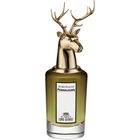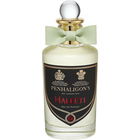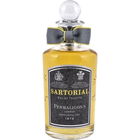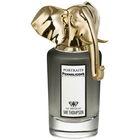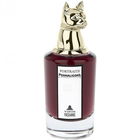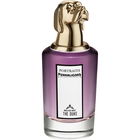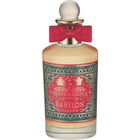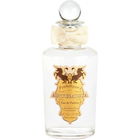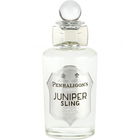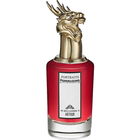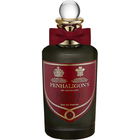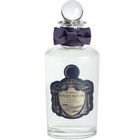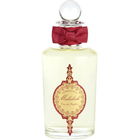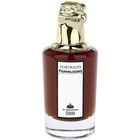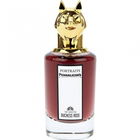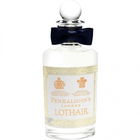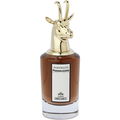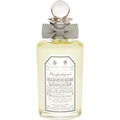Douro is not named after Duro (by Nasomatto), the scent for tough men, which is derived from the Italian and Spanish word for "hard," but after a river in the north of the Iberian Peninsula. In Spanish, it is called Duero and in Portuguese Douro, and it forms the border between the two countries along part of its course. In the Middle Ages, it marked the boundary for centuries (along almost its entire length) between the Islamic Al-Andalus in the south and the Christian kingdoms, especially Asturias, in the north.
Douro is an Eau de Portugal (as it says on the label), and this is, as a fellow Parfumo explained to me, a special form of Eau de Cologne with a strong proportion of oranges (or mandarins). Portugal by 4711 is also one of these, and many English fragrance companies offer or have offered such Eaux. The fact that Penhaligons decided to rename "Lords" to "Douro" during the rebranding is very fitting and subtle in this respect.
Traditionally, much connects England and Portugal, such as English military aid to Portugal against Napoleon and Portuguese military aid to England against Kaiser Wilhelm. But probably nothing connects the two nations as much as Port wine, a kind of national drink of the English, which is cellared in Portugal and whose grapes may only be grown in the upper Douro Valley, the wine region Alto Douro (reportedly the oldest concretely defined and named wine region in the world). Allegedly, English Port wine traditions date back to the 14th century, when the name Port wine and the wine region did not even exist yet.
In another sense, the name (and the designation as Eau de Portugal) may not be entirely appropriate. For this very beautiful scent has relatively little to do with an orange-heavy cologne, that is, a classic "EdPo." Thus, it stands a bit on the fringes of this series, but it certainly has its place within it.
Douro starts - in this respect quite typical of colognes - with a fine citrus blend, in which the mandarin is not so dominant. That it is listed here equally alongside lime, lemon, and bergamot is plausible; we have a nice general citrus in the best sense of the word, a blend, so to speak. However, much more dominant, in my view, especially at the beginning, is the lavender, so to speak the Great Bear in the starry sky over the Douro.
As this lavender-citrus blend is also nicely spiced with a few spicy notes, it creates the image of a light gray, finely fresh, somewhat understated finesse that feels much more British than Iberian. This is more of a gentleman on southern travels than a native Lusitanian.
With the continued presence of lavender, the scent then becomes soft, almost meltingly soft, blooming-floral. This is not dandyish or effeminate, but it has something flattering and delicate, as if the gentleman forgets his stiff upper lip for a while and discovers his soft spot in the beauty of southern lands. During this phase, the scent also becomes a bit more orangey, so I find lily of the valley and neroli absolutely plausible for this phase (we are here around minute 30 to 60).
After that, a very close, lingering, beautiful, noble, finely fresh finish begins, which lasts for several hours and which I no longer perceive as citrusy. In it, a decent dose of oak moss (or oak moss absolute or whatever is used today) mixes with wood (I would have suspected cedar rather than sandalwood) and the lavender that seeps from the top note into the base.
Douro is generous in its dosage, like a cologne, and can also be splashed on. If applied too subtly, it dissipates too quickly and does not unfold its effect.
All in all: This is complexity and refinement that only seems simple and plain, which is why this little water clearly surpasses the boundaries of a classic cologne. To honor this, I was inclined to give 9 points (which would be anything but absurd!), but since the scent, despite all its beauty, does not evoke the feelings of infatuation associated with a 9 for me, it remains somewhere at 8.74.
Still a super scent!
As is Duro as well.







 Top Notes
Top Notes  Bergamot
Bergamot Lavender
Lavender Basil
Basil Geranium
Geranium Lemon
Lemon Lime
Lime Mandarin orange
Mandarin orange Heart Notes
Heart Notes  Lily of the valley
Lily of the valley Neroli
Neroli Base Notes
Base Notes  Oakmoss
Oakmoss Labdanum
Labdanum Sandalwood
Sandalwood Musk
Musk
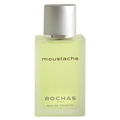


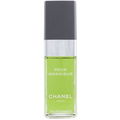
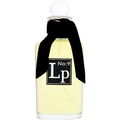








 BertolucciK
BertolucciK Godfreywilde
Godfreywilde JonasP1
JonasP1 Eggi37
Eggi37 Salva
Salva Tony1106
Tony1106 Schoeibksr
Schoeibksr Yatagan
Yatagan Ergoproxy
Ergoproxy Chrislibond
Chrislibond